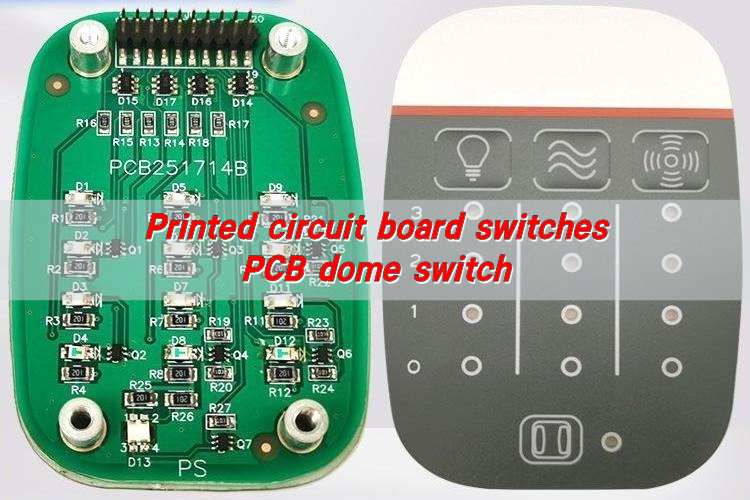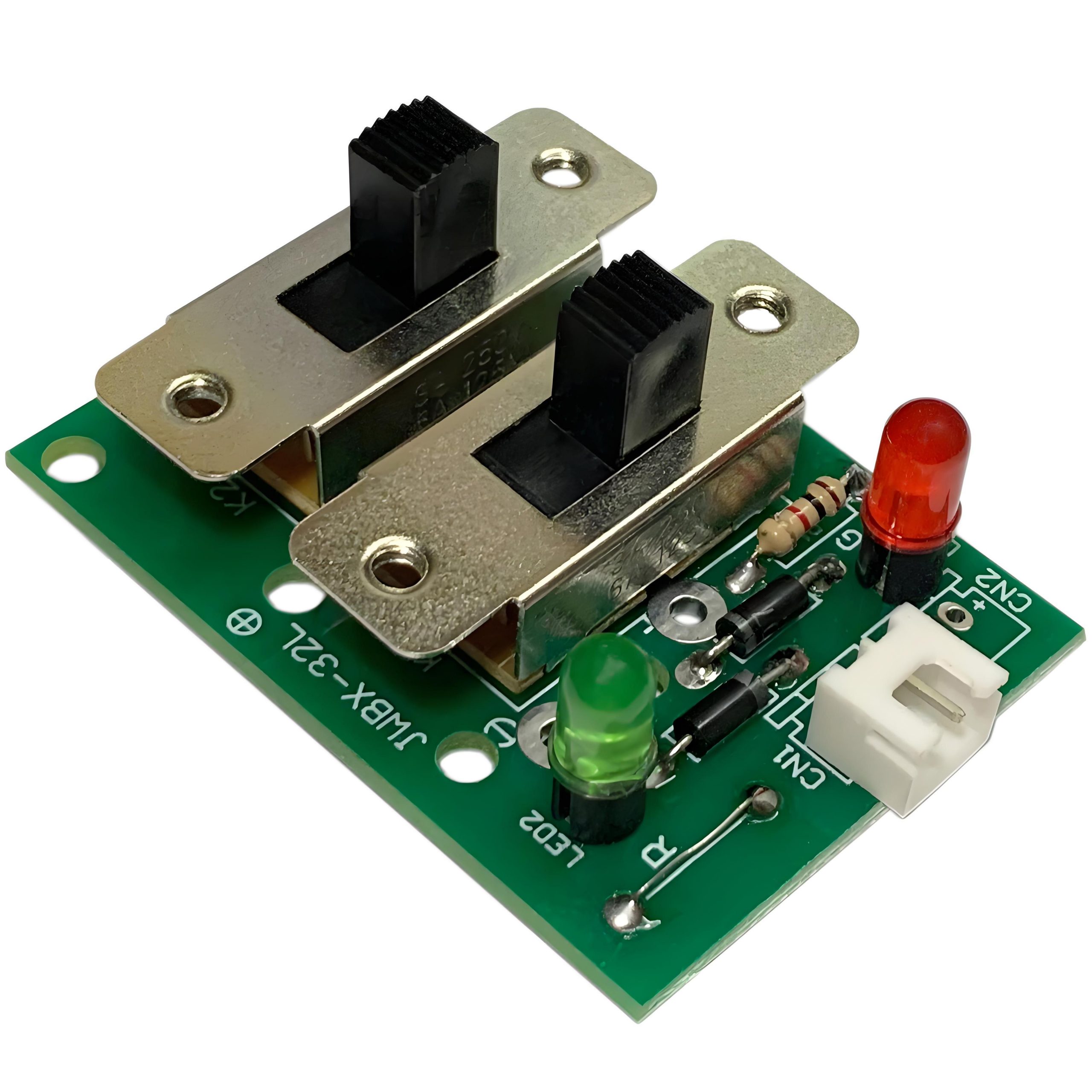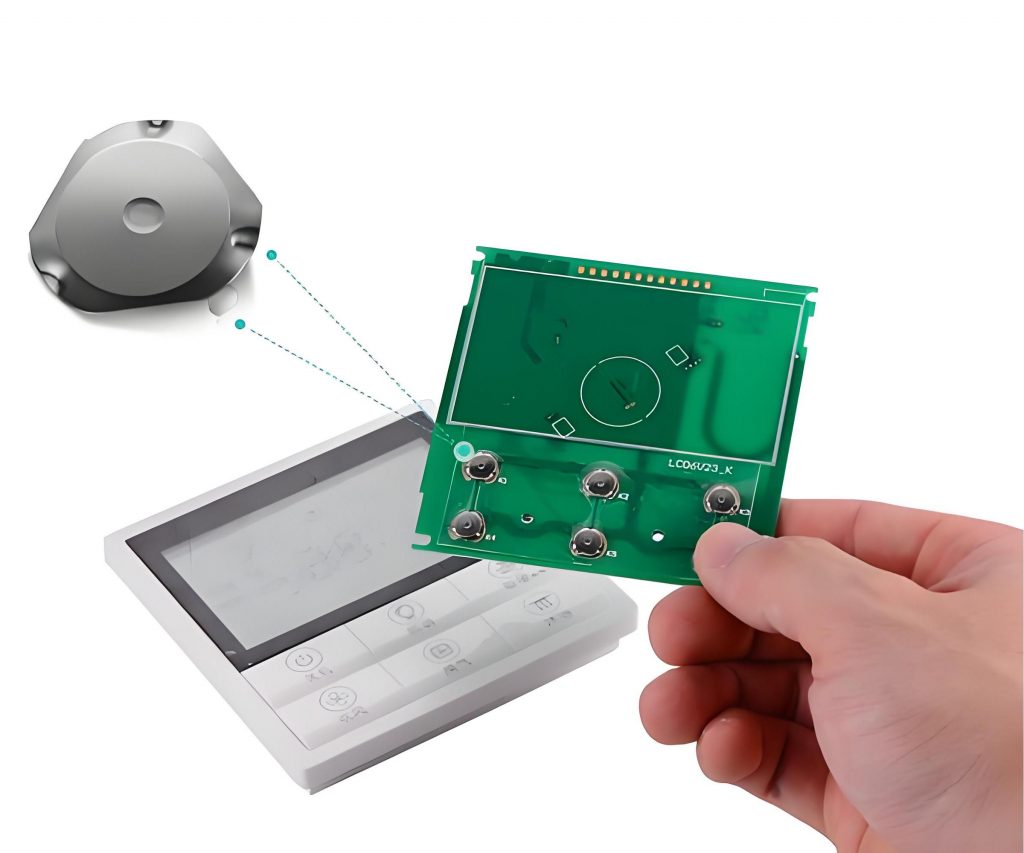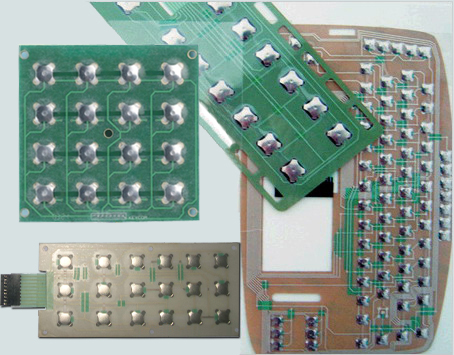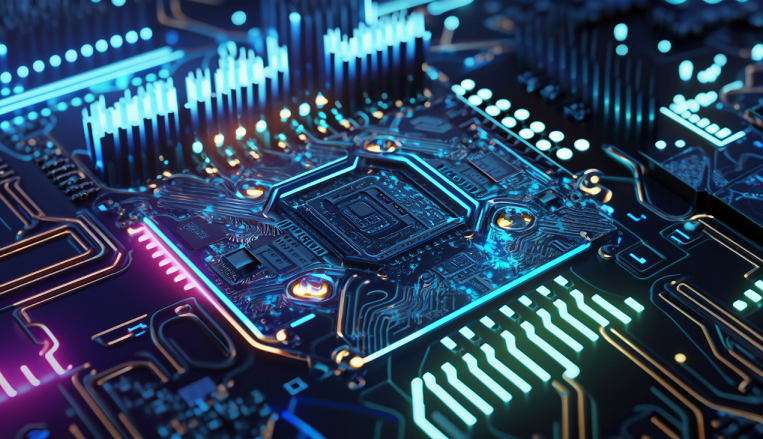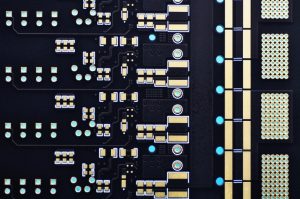Printed circuit board switches (PCB switches) are an integral component in electronic devices that allow current to flow or be interrupted in a circuit. Among them, PCB dome switches offer crisp tactile feedback, high reliability, and easy integration, making them ideal for everything from consumer devices to industrial panels.
What is a PCB switch?
PCB switch is a control device mounted on a printed circuit board. It allows users to interact with electronics through simple actions. Turning a device on, changing a setting, or starting a function often happens with a PCB switch.
They come in various forms. Some are tactile. Others are soft-touch. Some are designed for heavy use. All types share a goal: precise, responsive user input.
Small in size, PCB switches deliver big performance. Their design ensures low-profile, efficient operation across many devices.
How does a printed circuit board switches work?
PCB switches complete circuits when pressed. Two contacts inside the switch touch, allowing current to flow. This flow sends a signal to the device’s processor. Once released, the contacts separate and the signal stops.
Some switches use rubber or plastic materials. Others use metal domes. No matter the type, the process is consistent. They translate physical action into digital output.
What are circuit board switch types?
Thereâs a wide range to explore. Some of the most common circuit board switch types include:
- Tactile switches: These give a distinct click when pressed. Perfect for user interfaces.
- Toggle switches: Often found in industrial settings, they flip between states.
- Push button switches: Simple and efficient. Often used in consumer electronics.
- Slide switches: Move side-to-side to open or close a circuit.
- Rotary switches: Used for controlling devices with multiple options.
- Membrane switches: Flat and sealed, ideal for wet or dusty environments.
- Dome switches (including metal domes): Deliver tactile feedback and durability.
Each type serves specific purposes. Some are built for rugged use, others for sleek designs.
How do you choose PCB switch types?
Choosing the right switch isn’t just about size. Itâs about function, environment, and experience.
First, consider the application. Is it for a wearable or a medical device? Does it need water resistance or high responsiveness?
Next, focus on the feel. Tactile feedback can enhance user satisfaction. For example, a solid click feels more secure than a mushy press.
Durability is key. If your product requires millions of cycles, dome switches or metal dome are top contenders.
Mounting style also matters. Surface-mount technology (SMT) is ideal for automated processes. Through-hole switches are better for heavy-duty usage.
Lastly, never ignore cost versus performance. Striking the right balance ensures both user happiness and budget control.
Where are PCB switches used?
Everywhere. Theyâre found in:
- Smartphones and tablets
- Wearable fitness trackers
- Automotive dashboards
- Medical monitoring equipment
- Consumer appliances
- Industrial controls
- Gaming consoles and controllers
- Smart home devices
PCB switches keep our devices functional, responsive, and enjoyable to use. Without them, even the most advanced system becomes difficult to operate.
What is a PCB dome switch?
PCB dome switch is a special kind of tactile switch. It uses a metal dome to complete a circuit. When pressed, the dome collapses and bridges the contacts underneath.
The beauty lies in its simplicity. When released, the dome returns to shape, breaking the connection. This mechanism ensures long-lasting reliability and quick response times.
Metal domes are especially favored for their sharp tactile feel. Users feel that satisfying “snap” which confirms the input was registered.
Why use metal domes for circuit board switches?
Metal domes offer a blend of sensitivity and strength. Their advantages include:
- Crisp tactile feedback: Users know exactly when a button is pressed.
- High durability: Many domes last over 1 million cycles.
- Slim profile: Ideal for sleek, compact designs.
- Fast response: Instant signal when activated.
- Corrosion-resistant: Especially when made from stainless steel.
Metal domes work across different applications. Whether in medical gear or touch panels, they perform consistently. They also resist wear and temperature shifts. Thatâs why they are used where precision matters.
How is a metal dome switch different?
Metal domes outperform rubber and membrane layers in many areas.
Unlike membrane switches that rely on pressure-sensitive layers, metal dome switches use a physical component to create contact. This makes them more tactile, with less chance of accidental activation.
Compared to rubber domes, metal domes are more consistent. They donât degrade as fast and hold up under heavy use.
Also, metal dome switches are cleaner. There are fewer moving parts and minimal debris generation. In critical fields like medical and aerospace, this matters.
How do metal dome switches work on PCBs?
Metal domes sit over circuit contacts. It may sit on a spacer or adhesive film or held within a dome array.
When pressed, the dome collapses. It connects the circuit beneath. Release it, and the dome returns to shape. This makes and breaks the signal.
Dome arrays make installation easier. Each dome aligns with its PCB contact. Assembly becomes fast and accurate.
These switches support mass production. SMT machines can place them quickly. You can also fine-tune dome propertiesâlike snap force and shape.
Conclusion:
Printed circuit board switches are at the heart of modern electronic control. From standard tactile switches to high-performance metal domes, these components create that essential connection between people and machines.
Among all the options, PCB dome switchesâespecially metal dome switchesâstand out for their tactile feel, durability, and reliability. Theyâre the preferred choice when performance and user experience matter most.
For more information or to request samples, contact us today at sales@bestpcbs.com
Tags: circuit board switch types, circuit board switches, metal dome switch, pcb dome switch, pcb switches, printed circuit board switches


